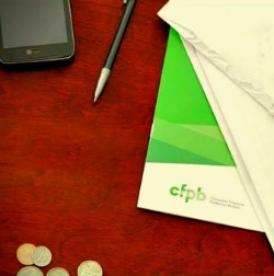With the release of the Consumer Financial Protection Bureau’s COVID-19 mortgage servicing final rule and an August 31, 2021, effective date that will be here before we know it, the race is on for servicers to digest the law’s new requirements and prohibitions and then implement them. This will not be an easy task.
As we noted in our prior post, the Bureau’s final rule contains four main components:
-
Moratorium on new foreclosure actions through December 31, 2021;
-
Exception to the anti-evasion clause for certain COVID-19 modification options;
-
New early intervention communication requirements; and
-
Clarification on the reasonable diligence standard for borrowers in forbearance.
Below is a more detailed summary of each of the major aspects of the rule. To learn more, join us on Wednesday, June 30, 2021 for a one-hour webinar. We will break down each of the major components of the final rule, provide our observations, and discuss some important considerations as servicers begin implementation efforts. Register for the webinar here.
1. Foreclosure Moratorium
The hallmark of the Bureau’s final rule is a moratorium on new foreclosure actions. However, rather than calling this a moratorium or “a temporary COVID-19 emergency pre-foreclosure review period” like the proposal framed it, the Bureau labels the foreclosure restrictions as temporary “procedural safeguards” that servicers must comply with before starting new foreclosure actions. Regardless of the name, the substance of the rule still serves to prevent servicers from making the first notice or filing required to initiate foreclosure proceedings for most loans.
This new framework will become effective on August 31, 2021, and will remain in effect through December 31, 2021. Unlike the CARES Act and other initiatives put forth throughout the pandemic that only applied to federally backed mortgage loans, the Bureau’s rule applies to all closed-end mortgage loans that are secured by a borrower’s principal residence, regardless of whether a loan is federally backed or held in portfolio. The procedural safeguards do not apply to small servicers and properties that are not secured by a borrower’s principal residence. Notably, the Bureau also created exceptions from the procedural safeguards for any accounts that became 120 days delinquent prior to March 1, 2020, and any accounts where the statute of limitations related to foreclosure expires prior to January 1, 2022.
In addition to the aforementioned exceptions, the procedural safeguards framework in the final rule creates three distinct paths by which some foreclosures may be initiated during the latter months of 2021. First, if a borrower submits a complete loss mitigation application and the entire loss mitigation process has been exhausted and the borrower does not end up performing on a loss mitigation option, then the servicer may make the first notice or filing required to initiate foreclosure. Notably, there is not a temporal aspect to this safeguard, meaning that applications received prior to the rule’s effective date may qualify.
Next, it is considered to be a procedural safeguard if a servicer determines that a property is abandoned according to the laws of the state or municipality where the property is located. Note that there is some overlap between this safeguard and the general scope parameters of the rule, which exempt properties that are not a borrower’s principal residence. Regardless, if a property is considered abandoned based on the law of the applicable state or municipality, then a servicer may proceed with the first notice or filing.
Finally, the Bureau is considering it to be a procedural safeguard if a borrower is deemed to be unresponsive. This means that the servicer has not received any communications or payments from the borrower for at least 90 days. Additionally, the servicer must have complied with all early intervention live contact obligations and all applicable notice requirements in section 1024.41 of Regulation X during that time. Furthermore, an early intervention written notice must be sent between 10 and 45 days prior to the first notice or filing being made and, if a borrower was on a forbearance plan, the plan must have ended at least 30 days prior to the first notice or filing being made. Once all these boxes are checked, the first notice or filing may be made.
Altogether, this new procedural safeguard framework is a significant departure from what the Bureau initially proposed. The shift in approach is designed to balance concerns that were articulated by commenters regarding the broad nature of the Bureau’s proposal. While servicers may now be able to proceed with foreclosure initiation in some cases, servicers must be extremely diligent and ensure full compliance with the various exceptions and procedural safeguards. To that end, the Bureau emphasizes that servicers must retain evidence of compliance any time it proceeds with foreclosures under the procedural safeguard framework.
2. Anti-Evasion Exception
To facilitate fast and easy loss mitigation offers for borrowers who may need assistance coming out of the pandemic, the Bureau finalized its proposed exception to what is commonly referred to as the “anti-evasion clause” in Regulation X. More specifically, the law has long prohibited — with some very limited exceptions — mortgage servicers from offering loss mitigation options based upon evaluations of incomplete applications. You may recall that, through our prior blog posts and advocacy efforts, in the spring of 2020 we were able to secure an interim final rule that provided a new exception to the anti-evasion clause restrictions for COVID-19 deferral options. During that process, we also raised concerns about other streamlined programs and the need for servicer flexibility. A year later, the CFPB is now adding another exception that is tailored towards streamline modification options.
To take advantage of the exception and offer a loan modification without first collecting and evaluating a complete loss mitigation application, the modification option must meet the following criteria:
-
The modification must be made available to borrowers experiencing a COVID-19-related hardship;
-
The term of the loan is not extended by more than 480 months from the date of the modification;
-
The borrower’s principal and interest payments do not increase;
-
Any amounts that are deferred do not accrue interest;
-
No fees can be charged in connection with the modification;
-
All existing late charges, penalties, stop payment fees, and similar charges that were incurred on or after March 1, 2020, must be waived upon the borrower’s acceptance of the modification; and
-
The borrower’s acceptance of the loan modification offer, or completion of any trial plan, must bring the account current.
If these criteria are satisfied, then a servicer can offer the modification option based upon an evaluation of an incomplete application.
The Bureau was clear that this exception is largely based upon programs implemented by federal agencies and government-sponsored entities, including the Fannie Mae and Freddie Mac Flex Modification options. Servicers that are seeking to provide quick and meaningful relief to borrowers without having to go through what is often a complicated and protracted process of collecting a complete application may take advantage of this exception. At the same time, servicers should continue to be mindful of the anti-evasion clause and ensure that offers are being made in accordance with the law.
3. Early Intervention
Beginning on August 31, 2021, and until October 1, 2022, servicers will be subject to new, more specific early-intervention live contact requirements. Like the initial proposal, the specific requirements hinge upon whether a borrower is in forbearance at the time the contact is made. If a borrower is not in forbearance at the time of live contact and forbearance is available based on a COVID-19-related hardship, then the servicer must explain to the borrower:
-
That forbearance programs are available;
-
Unless the borrower is not interested in receiving information about forbearance, information about what forbearance options are available and how to apply; and
-
At least one way that the borrower can find contact information for homeownership counseling services.
On the other hand, if a borrower is on forbearance, then the servicer must explain to the borrower:
-
The date the forbearance plan is scheduled to end;
-
What loss mitigation options are available and how to apply; and
-
At least one way that the borrower can find contact information for homeownership counseling services.
For a borrower not on forbearance, the standard early intervention live contact timing requirements still apply. However, when a borrower is on forbearance, the rule sets forth unique timing requirements for when this content must be delivered to a delinquent borrower. Generally, this rule applies to the live contact that occurs between 10 and 45 days before the scheduled end date of the borrower’s forbearance plan. However, for any plan that is scheduled to end between August 31, 2021, and September 10, 2021, the rule applies to the first live contact that is made after August 31, 2021.
This framework raises an important question: Must servicers comply with the early-intervention live contact requirements when a borrower is on a short-term forbearance plan that was offered based on an evaluation of an incomplete application? This question was addressed in the Bureau’s April 3, 2020, Frequently Asked Questions. Now, however, the Bureau is adding commentary that could be viewed as contradictory to that guidance. We will have more on this issue in the future, so stay tuned.
4. Reasonable Diligence
Finally, in connection with forbearance plans, the Bureau is clarifying when a servicer must resume reasonable diligence efforts to help a borrower complete a loss mitigation application. Regulation X has long noted that, when a borrower has been offered a short-term forbearance plan based upon an evaluation of an incomplete loss mitigation application, servicers may suspend reasonable diligence efforts until near the end of the plan, at which time the servicer must contact the borrower to determine whether the borrower wants to complete the application. In connection with programs offered based upon a COVID-19-related hardship, this contact must occur at least 30 days before the scheduled end of the forbearance plan.






 i
i


